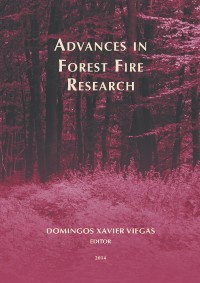Please use this identifier to cite or link to this item:
https://hdl.handle.net/10316.2/34044| DC Field | Value | Language |
|---|---|---|
| dc.contributor.author | Sharples, Jason J. | |
| dc.contributor.author | Simpson, Colin C. | |
| dc.contributor.author | Evans, Jason P. | |
| dc.date.accessioned | 2014-10-17T14:45:14Z | |
| dc.date.accessioned | 2020-09-09T21:31:42Z | - |
| dc.date.available | 2014-10-17T14:45:14Z | |
| dc.date.available | 2020-09-09T21:31:42Z | - |
| dc.date.issued | 2014 | - |
| dc.identifier.isbn | 978-989-26-0884-6 (PDF) | |
| dc.identifier.uri | https://hdl.handle.net/10316.2/34044 | - |
| dc.description.abstract | Under conditions of extreme fire weather, bushfires burning in rugged terrain can exhibit highly atypical patterns of propagation, which can have dramatic effects on subsequent fire development. In particular, wildfires have been observed to spread laterally across steep, lee-facing slopes in a process that has been termed vorticity-driven lateral spread (VLS; also known as ‘fire channelling’). Coupled fire-atmosphere modelling using large eddy simulation has indicated that the fire channelling phenomenon occurs due to a dynamic interaction between terrain modified winds and the fire’s convective plume. This interaction creates pyrogenic vorticity that drives a fire laterally across a leeward slope. In this work we extend previous modelling, using the WRF-Fire coupled fire-atmosphere model, to specifically consider the environmental thresholds that define the likely onset of the VLS phenomenon. In particular we investigate the effects of wind speed and topographic slope on the occurrence of atypical lateral spread. The simulated behaviour of fires on leeward slopes, and the implied transition in fire propagation that can occur when certain environmental thresholds are breached, highlight the inherent dangers associated with firefighting in rugged terrain. The propensity for dynamic interactions to produce erratic and dangerous fire behaviour in such environments has strong implications for firefighter and community safety. At the very least the research findings provide additional support for careful planning prior to prescribed burning operations and the use of well-briefed observers in firefighting operations undertaken in complex topography | eng |
| dc.language.iso | eng | - |
| dc.publisher | Imprensa da Universidade de Coimbra | por |
| dc.relation.ispartof | http://hdl.handle.net/10316.2/34013 | por |
| dc.rights | open access | - |
| dc.subject | Dynamic fire propagation | eng |
| dc.subject | environmental thresholds | eng |
| dc.subject | wind-terrain-fire interaction | eng |
| dc.subject | VLS | eng |
| dc.title | Environmental thresholds for dynamic fire propagation | por |
| dc.type | bookPart | por |
| uc.publication.firstPage | 158 | - |
| uc.publication.lastPage | 164 | - |
| uc.publication.location | Coimbra | por |
| dc.identifier.doi | 10.14195/978-989-26-0884-6_16 | - |
| uc.publication.section | Chapter 1 - Fire Behaviour and Modelling | por |
| uc.publication.digCollection | PB | por |
| uc.publication.orderno | 16 | - |
| uc.publication.area | Ciências da Engenharia e Tecnologias | por |
| uc.publication.bookTitle | Advances in forest fire research | - |
| uc.publication.manifest | https://dl.uc.pt/json/iiif/10316.2/34044/211599/manifest?manifest=/json/iiif/10316.2/34044/211599/manifest | - |
| uc.publication.thumbnail | https://dl.uc.pt/retrieve/11175186 | - |
| uc.publication.parentItemId | 53868 | - |
| uc.itemId | 70339 | - |
| item.grantfulltext | open | - |
| item.fulltext | With Fulltext | - |
| Appears in Collections: | Advances in forest fire research | |
Files in This Item:
| File | Description | Size | Format | |
|---|---|---|---|---|
| 978-989-26-0884-6_16.pdf | 1.88 MB | Adobe PDF |  |
Items in DSpace are protected by copyright, with all rights reserved, unless otherwise indicated.
